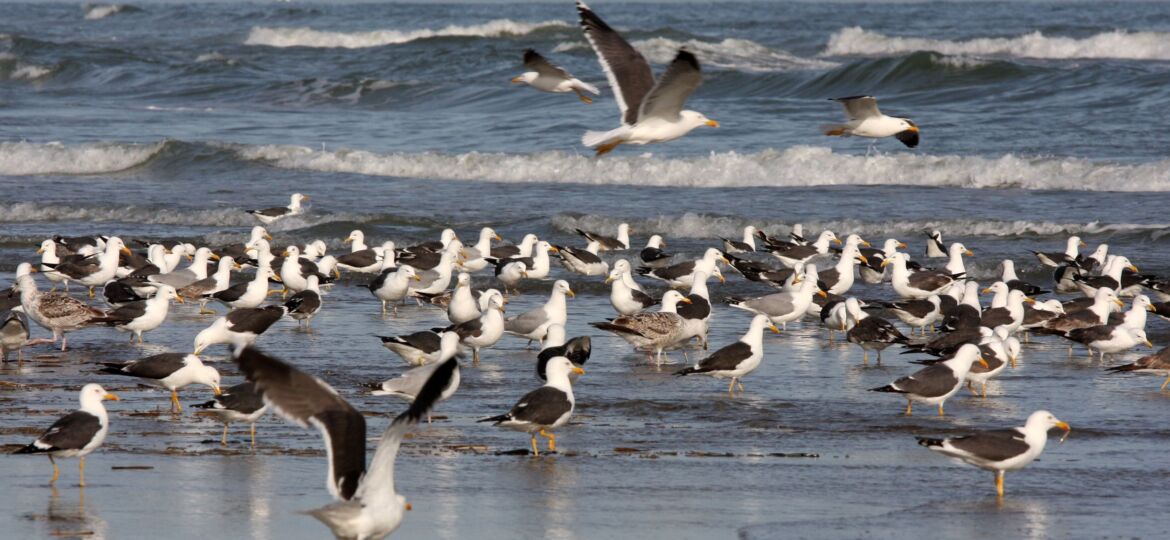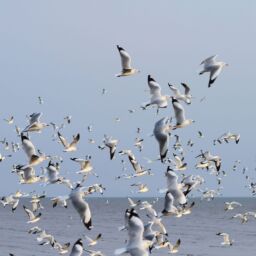
The Khijadiya Bird Sanctuary covers the areas around the Kalindi and Ruparel rivers. Although it is relatively small (about 6 square kms), the sanctuary is impressive because of the wide range of birds you can spot there. You can spot both local and migratory birds here – an estimated 300 types of birds are visible.
At one time Khijadiya (sometimes spelled Khijadia) was home to hundreds of birds like shikras, eagles, Dalmatian pelicans, Eurasian spoonbills, Indian skimmers, kites, grebes, gray francolin, pigeons pheasant-tailed jacana, greenshanks, terns, godwits, ducks, cranes, harriers, shovelers, cormorants, and flamingoes.
The painted stork, black-headed ibis, and oriental darter are now on the endangered species list due to degradation by human activities and beautification activities that are turning the sanctuary into a picnic spot. It is more about recreation than conservation with the focus shifting from birds to human. Birds were and are attracted to Khijadiya because of its strategic location. Birds from Afghanistan, Pakistan and Iran winter here.
The sanctuary is also home to jackals, cats, snakes, wolves, bluebells, mongoose and reptiles.
Once you get inside the Khijadiya sanctuary you can take advantage of existing nature trails, watchtowers, and reclamation bunds to watch birds. The best time is probably morning and evening when the birds are most active. There is an Interpretation Centre for tourists where one can get more information about birds in the sanctuary and their particular traits.
It became widely known as a favored destination of bird-lovers since around the 1920s. The erstwhile rulers had constructed a check-dam to store the waters of the Ruparel River. The idea was to supply water to the city of Jamnagar.
Interestingly, the check-dam created a unique situation. On the one side of the check-dam were the freshwaters lakes. On the other side, there was the salty water from the bordering sea. The seawater nourishes the marshes that support a unique range of both flora and fauna. It was declared a sanctuary in May 1981.
Because Khijadiya is more like a recreation eco-tourist village, you can relax on benches, sit by the water bodies and have a good time or go on a hike to various points like Jambuda and watch birds and their nesting sites. The Marine National Park and the gulf are not far off so you can get into your hired car and drive off to the coast.
The Khijadiya Bird Sanctuary is located about 150 kms from Dwarka. It is actually on the outskirts of Jamnagar, located around 12 kms from the city.
Jamnagar has an airport that is about 20 km from the sanctuary. Jamnagar is also a railhead and there are two railway stations, one of which is the old one about 11 km and the second one Hapa, about 7 km from the sanctuary. Jamnagar is easily accessible by road from all parts of Gujarat.
Best Time to Visit
Summers are best avoided due to high temperatures. Monsoons can see many areas being flooded. September to February end is when you should plan your trip to the Sanctuary with December being a peak season. The weather is pleasant and you can stay out in the sun all day long.
This sanctuary is perfect for people who are more in the mood for a relaxed visit rather than a trip to experience the raw side of nature. Photographers will love Khijadia.
| Trip Advisor | https://bit.ly/2Kw4k85 |
| Google Location | https://goo.gl/maps/CQn4roLfbuHR2aGVA |


